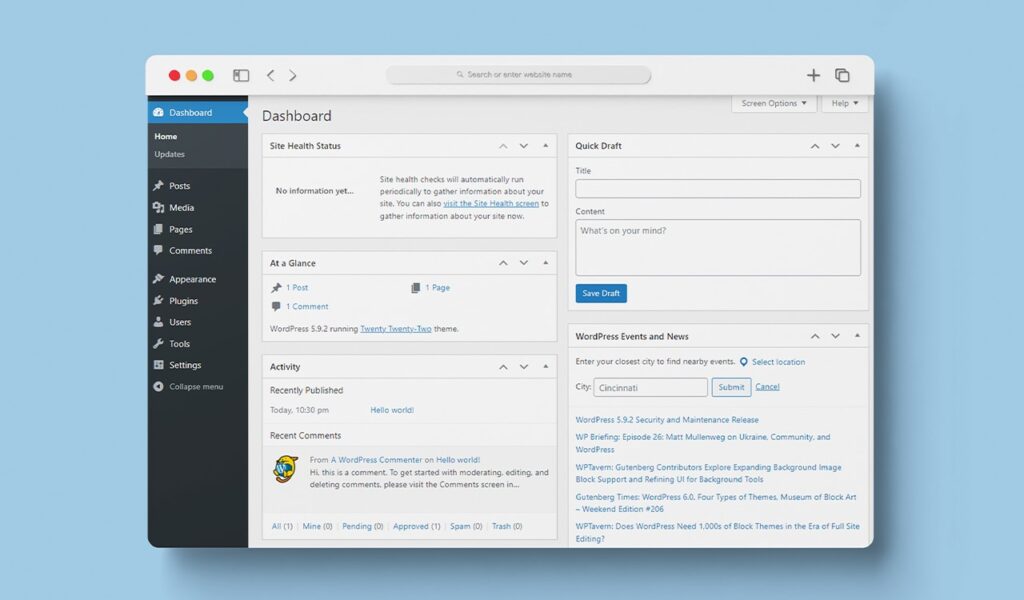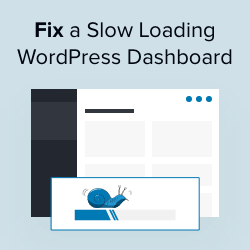Fix Slow WordPress Panel: Are you fed up with handling the slow-loading issues of your WordPress panel?
Well, nobody likes to work with a website that has speed issues. So, we are here to pick you up on dealing with speed issues with your WordPress panel. Follow the below article for useful tricks to fix the slow WordPress panel.




Here are some of the quick fixes you can apply to boost the speed of your slow WordPress panel:
It is mainly observed that a lack of updates makes your website load slowly. And that affects the performance as well. The core team releases the latest updates to improve speed and performance. So it is highly recommended to keep your website updated to avoid such issues. When you install the latest updates, it automatically refreshes the working speed of your whole website. So by keeping your website up-to-date with the latest releases, the WordPress panel will not face slow loading issues. And to get the latest update releases, hover over the WordPress dashboard and tap the Updates option. This will help with installing the latest updates.
Getting an older version of PHP may greatly affect the loading of the WordPress panel. WordPress is mostly developed in the open-source language PHP. And as the new versions roll out, speed and performance factors are getting more space. So it is advised to always use the latest version of PHP so as not to affect the speed of the WordPress panel.
Some hosting companies neglect the latest versions of PHP while focusing on other aspects of running our website. This is a big issue if your hosting service does not rely on the latest PHP version, and it may affect the speed. You can simply check for the PHP version provided by your hosting service by
reaching the Tools tab under the dashboard.
Then choose the Site Health option and switch to the Info tab. This will further show you the PHP version, along with more details. For Bluehost hosting users, you can simply visit the control panel and then tap the Advanced section from the left sidebar.
Here, tap the MultiPHP Manager icon, and this will take you to your current WordPress blog. And this will let you choose the version you wish to use on the blog.
Again, the aspect that affects the speed of the WordPress Panel is less PHP memory. This again goes to the account of the hosting service that provides storage for your website. If there is not enough storage for PHP on the server, it may create slow-loading issues on the website. As said, WordPress runs on PHP, which seems to be the heart of your website. And if the heart does not have enough space to stay, it will create loading issues.
So to check the memory limit of PHP, visit the dashboard area and tap the Tools section. Then go to the Site Health option and switch to the Info section on the page. Here, you will be able to find out the memory limit of PHP. If it seems less than 500M, then you need to maximize it. To maximize the limit of PHP memory, simply put the below line in your wp-config.php file: define(WP_MEMORY_LIMIT’, ‘512M’);
WordPress tends to give access to some unusual plugins or content that is of no use for the website. However, if the limit is set to not enter them on the website by restricting them. You can eventually limit access to unnecessary posts, pages, custom post types, and more.
Simply tap Screen Options in the Posts section of the WordPress dashboard. This will open the popup where you can set the limit of posts by typing the value in the Number of items per page box. By default, it is set to be 20, which is the minimum ratio, but you can make it less. Similarly, you can do this for the pages as well.
This will eventually protect the WordPress panel from being affected by slow loading. Keep a performance check on installed plugins. It more often happens that, just to add more and more functionality, we keep on adding plugins to the website. However, some of these plugins can slow down the load by consuming unnecessary resources.
You can find such plugins by simply installing another plugin called the Query Monitor plugin. The plugin tends to help you find the plugins that affect the performance and load time of the website. You simply need to install and activate it. This will be added under the menu items of the WordPress toolbar.
Simply click on the plugin and switch to the Queries by Component from the left panel. This will give a performance view of the plugins, including the ones consuming too many resources. You can disable them from the Plugins section of the dashboard.
Caching can be the best way to keep your website intact or boost the loading speed. It eventually builds up a great performance score and boosts the speed of the WordPress panel as well.
It also optimizes the resources that affect the overall performance by giving recommendations. One of the finest caching plugins is WP Super Cache, which is used by most site owners.
Also, you can switch to adding more caching plugins like W3 Total Cache, Litespeed Cache, WP Rocket, and more.
Again, the loading speed of the WordPress panel can be affected by unnecessary widgets. WordPress more often adds widgets that are of no use but can impact the speed of the website. Some of the plugins even include additional widgets on the WordPress dashboard.
You need to stop this to prevent it from affecting the loading speed. The best way is to disable them from the dashboard. You simply need to tap the Screen options and uncheck the box for widgets.
Some of the woocommerce-handling stores can have a performance effect while loading the website. Woocommerce eventually adds some features that will affect the loading speed.
You simply need to disable such features by tweaking the settings in the Screen Options. Just uncheck the box in front of the Woocommerce dashboard widgets.
<Files wp-login.php>
AuthType Basic
AuthName: "Protected Folder"
AuthUserFile /home/username/public_html/yourwebsite/.htpasswd
Require user jsmith
Satisfy All
</Files>Here, you need to edit “jsmith” and replace it with your website username. Also, you need to change the AuthUserFile to the file path of the “.htpsswrd” file. Upgrade to a better hosting provider.
To beat all the above aspects of fixing the slow-loading WordPress Themes panel, simply upgrade your hosting provider. All the above fixes remain worthless when you use a hosting service that has poor performance tactics.
You must switch to the Bluehost hosting service if you are currently relying on any other hosting service. Bluehost is one of the finest services and is popular for its speed and performance factors.
This is how we have come to the conclusion of the above article, which gives vital fixes for boosting the speed of the WordPress panel. I hope this article has given you enough facts to help you fix the slow WordPress panel.